In the vast expanses of our magnificent planet, there exist certain locales that profoundly underscore our diminutive stature in the face of nature’s grandeur.
Among these, ten places stand out, spanning continents and varying in nature, but all instilling a sense of awe and humility. The Grand Canyon’s majestic chasm, the vertiginous Mount Everest, the timeless Great Pyramids, the sprawling Amazon Rainforest, and the colossal Redwood Forests, among others, serve as humbling reminders of our relative insignificance.
This compilation aims to provoke introspection and further exploration into these awe-inspiring geographical marvels.
The Mighty Grand Canyon, USA
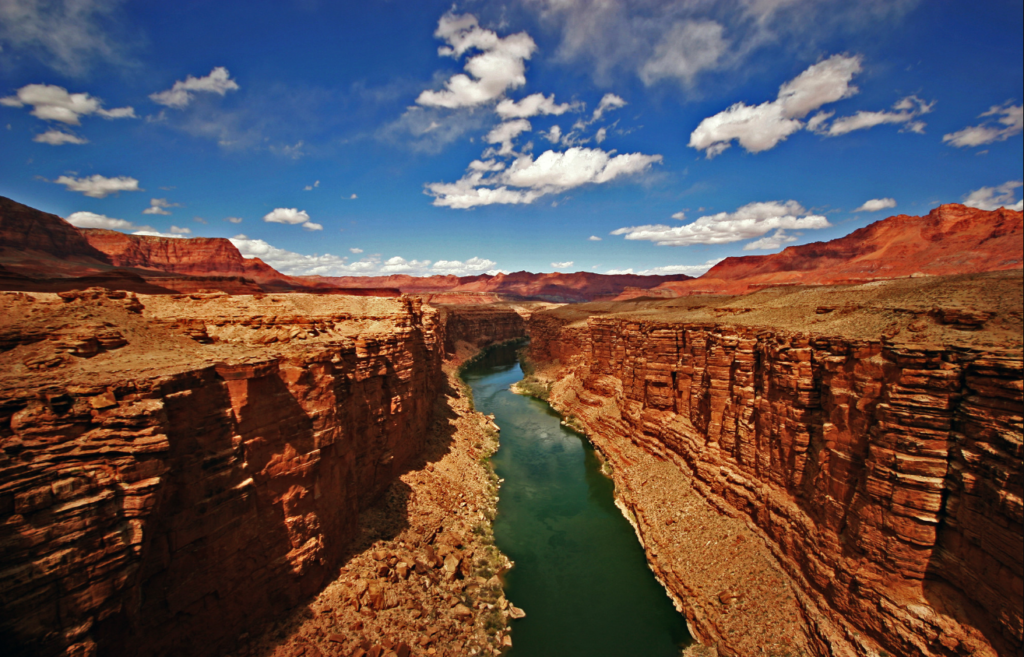
Imposing in its grandeur, the Mighty Grand Canyon in the USA offers a humbling spectacle that effortlessly diminishes one’s sense of self-importance amidst its colossal natural beauty.
Formed through millions of years of geological activity and erosion by the Colorado River, the Canyon formation process is a fascinating testament to the power of nature.
Its layered bands of red rock reveal an evolutionary timeline that dates back to nearly two billion years of the earth’s geological history.
From an anthropological perspective, the Grand Canyon holds immense Indigenous history significance. It was home to the ancient Pueblo people, who were the first known inhabitants of the Canyon. These early settlers built settlements within the canyon and its many caves, leaving behind artifacts and architectural remnants that provide insight into their lives and cultures.
The Canyon is considered a sacred site by numerous Native American tribes, including the Hopi, Navajo, Zuni, and Havasupai, who continue to maintain profound spiritual and cultural connections to this majestic landscape.
Whether it’s the awe-inspiring vistas, the sheer scale of its depth and width, or the rich tapestry of its historical and cultural narratives, the Grand Canyon truly exemplifies the insignificance of human constructs in the face of natural grandeur. I
ts breath-taking beauty and the intricate history embedded in its walls make it not just a landmark, but a symbol of the earth’s longevity and the enduring legacy of its earlier inhabitants.
The Grand Canyon is indeed a monument to time, nature’s power, and humanity’s small place within it.
Scaling Mount Everest, Nepal
Ascending the formidable Mount Everest in Nepal, the highest peak on Earth, offers an unparalleled experience of human insignificance amid the overwhelming majesty of nature.
This colossal mountain, standing at a dizzying height of 8,848 meters, is not just a physical challenge but also a test of mental endurance and resilience, dwarfing all human scale and ambition beneath its icy ramparts.
The Everest Base Camp Experience is a journey like no other.
It begins with a thrilling flight from Kathmandu to Lukla, a town that boasts one of the most dangerous airports in the world due to its short runway and unpredictable weather conditions. From there, trekkers embark on a grueling hike to the base camp, traversing rocky terrains, crossing glacial rivers, and acclimatizing to the thin mountain air.
One cannot discuss Everest without mentioning the Sherpa people, the indigenous community renowned for their mountaineering skills.
Sherpa Culture Insights reveal a society deeply entwined with the mountains. Sherpas are not just guides; they are vital partners in any Everest expedition, providing critical logistical support, setting up camps, and often risking their lives to ensure the safety of climbers.
Their spiritual connection with the mountains, embodied in their reverence for Sagarmatha (Everest’s local name), adds a profound cultural dimension to the Everest experience.
In the face of Everest’s enormity, any sense of personal grandeur is humbled. From the Everest Base Camp Experience to Sherpa Culture Insights, a journey to this mighty peak is a potent reminder of our smallness in the vast expanse of nature.
Dwarfed by the Great Pyramids, Egypt
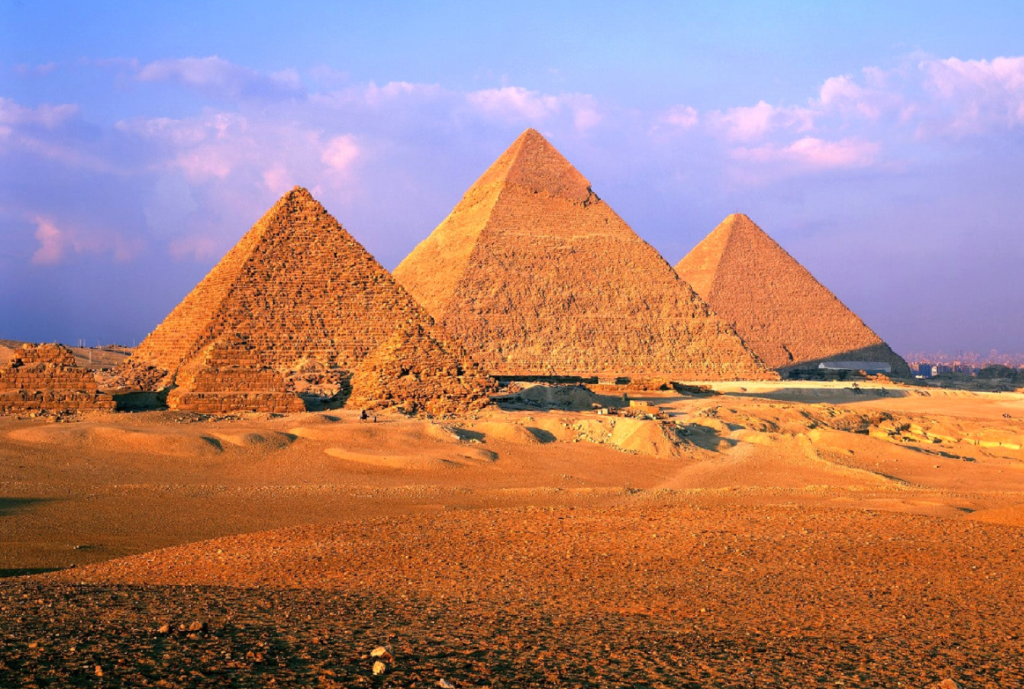
Stepping into the shadows of the Great Pyramids of Egypt, one quickly realizes their insignificance in the face of such ancient, monumental structures.
Towering at approximately 481 feet, the Great Pyramid of Giza, the oldest and the largest of the three pyramids in the Giza pyramid complex, leaves the modern man dwarfed and awestruck at the same time.
These edifices are not just a testament to the grandeur and sophistication of the Ancient Egyptian culture, but they also provide an insight into the complex and impressive pyramid construction techniques of the era.
The pyramids, built as tombs for the pharaohs and their consorts, were constructed by a skilled labor force, and not by slaves as previously believed. The enormous blocks of stone, some weighing up to 80 tons, were transported from quarries and meticulously placed to create these architectural marvels.
The precision with which these pyramids were built, aligning perfectly with the cardinal points and the stars, is a tribute to the advanced scientific and astronomical knowledge of the Ancient Egyptians. The intricate carvings and hieroglyphics within the pyramids further underscore their artistic and cultural prowess.
Standing before these colossal structures, it’s impossible not to feel smaller, a tiny speck against the backdrop of a rich and powerful civilization that existed over four millennia ago.
The Great Pyramids of Egypt, with their magnificence and mystery, remind us of our fleeting existence, and of civilizations that have risen and fallen, leaving behind monumental legacies that continue to inspire awe and wonder.
Amazon Rainforest’s Vast Wilderness, Brazil
Venturing into the heart of the Amazon Rainforest in Brazil, one is immediately enveloped by an overwhelming sense of humility amid the sheer vastness and diversity of this unparalleled natural wilderness.
The Amazon is a living, breathing testament to our planet’s remarkable power of creation, its rainforest biodiversity unlike any other on earth.
The rainforest’s ecosystem is so diverse that scientists are continually discovering new species. From the smallest insects to the tallest trees, everything here is interlinked, forming a complex web of life that is both fascinating and humbling. One cannot help but feel small and insignificant amidst such profound biological richness.
Within this vast wilderness, Indigenous Tribes have thrived for centuries, coexisting harmoniously with the rainforest. Their rich cultural heritage and profound understanding of the rainforest biodiversity are a testament to human adaptability and resilience.
The tribes’ deep-rooted connection to the land and their symbiotic relationship with nature serve as a humbling reminder of our place within the complex web of life.
The Amazon Rainforest is a natural behemoth, dwarfing human constructs in both physical size and biological complexity. It is a place where you will feel small, not just in size, but in the grand scheme of life. It is a stark reminder of our planet’s immense beauty and the fragility of its ecosystems, compelling us to reflect on our role in its preservation.
Underneath Australia’s Great Barrier Reef
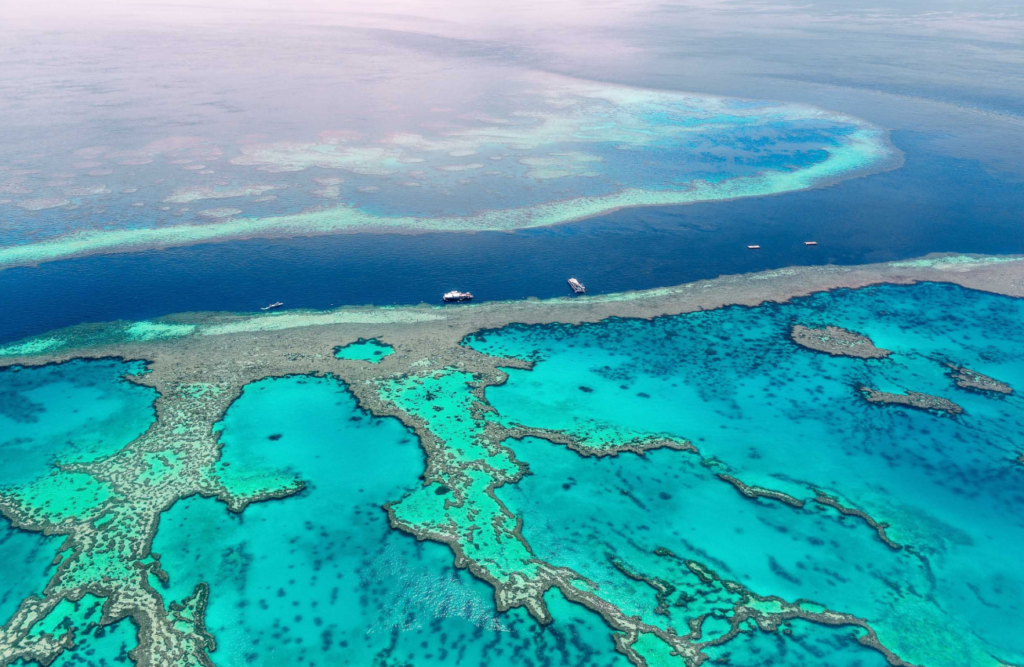
Plunging beneath the surface of Australia’s Great Barrier Reef, one encounters a vibrant underwater world that redefines the parameters of beauty and biodiversity.
This globally renowned marine ecosystem, teeming with life, stretches over 2,300 kilometers, making anyone exploring its depths feel incredibly small in comparison.
The Great Barrier Reef is home to a remarkable coral diversity, with over 600 types of hard and soft corals creating a kaleidoscope of colours and shapes that animate the ocean floor. These corals provide an integral habitat for thousands of marine species, including fish, mollusks, and crustaceans, making the reef a biodiversity hotspot.
However, this underwater marvel faces significant threats from climate change, pollution, and harmful human activities. Rising ocean temperatures, ocean acidification, and overfishing have led to a decline in coral health and diversity.
The significance of these challenges has led to a global call for reef conservation. Scientists, conservationists, and governments worldwide are actively seeking solutions to preserve this unique ecosystem for future generations.
Australia’s Great Barrier Reef Marine Park Authority has implemented zoning plans and regulations to reduce human impact and promote sustainable use.
These strategies, along with global efforts to tackle climate change, play a critical role in protecting the reef’s biodiversity and ensuring its longevity.
Lost in the Sahara Desert, Africa
Navigating through the vast expanse of the Sahara Desert in Africa, one is confronted with an overwhelming sense of insignificance amidst its seemingly endless sea of sand dunes and punishingly hot climate.
This massive desert, stretching over 9 million square kilometers, holds a profound presence that dwarfs human scale and reminds us of our minuteness in the face of nature’s grandeur.
The Sahara’s extraordinary conditions have led to unique desert survival strategies, developed over centuries by its inhabitants. These strategies are a testament to human resilience and ingenuity, as they rely on a deep understanding of the desert’s ecosystem.
Water conservation, use of shade, and navigation by celestial bodies are common techniques. The Tuareg, known as ‘blue men of the desert’ due to their indigo-dyed clothing, are particularly adept at surviving in this harsh terrain, relying on their knowledge of water sources and oasis locations.
A nomadic lifestyle exploration provides further insight into the ways humans have adapted to, and even thrived in, this formidable landscape. Nomadic tribes, such as the Berbers and the Bedouins, have mastered the art of moving across the desert, following seasonal rains, and utilizing camels for transportation.
Their culture, shaped by the desert’s relentless conditions, is a captivating blend of survival skills, craftsmanship, music, and oral storytelling.
Inside Mammoth Cave, Kentucky
Beneath the gentle hills of Kentucky, lies Mammoth Cave, the world’s longest cave system, a subterranean wonder that humbles visitors with its vastness and intricate geological formations.
With over 400 miles of surveyed passageways, this complex labyrinth of underground chambers and intricate passageways offers an unparalleled experience of feeling small and awestruck by nature’s grandeur.
The cave biology exploration of Mammoth Cave reveals an incredible ecosystem teeming with life, despite the perpetual darkness. Unusual species, adapted to life underground, thrive here, including the endangered Kentucky cave shrimp, which is completely eyeless.
This biological diversity coupled with the unique geological formations contributes to the cave’s designation as a UNESCO World Heritage site.
The historical significance study of Mammoth Cave adds another layer to its intrigue. Used by Native Americans over 2,000 years ago, the cave was later exploited for saltpeter, a key ingredient in gunpowder, during the War of 1812.
The 19th-century remains of the mining operation serve as reminders of the cave’s historical role, adding a sense of timelessness to the vast underground expanse.
A visit to Mammoth Cave is a journey into the heart of the earth, a profound experience of feeling insignificant in the face of nature’s monumental creation.
Whether it’s the miles of silent, shadowy passages, the peculiar creatures that call it home, or the resonant echoes of its past, Mammoth Cave is a place where one’s sense of self is diminished, replaced by a profound awe and respect for the natural world.
Feeling Small at Victoria Falls, Zambia/Zimbabwe
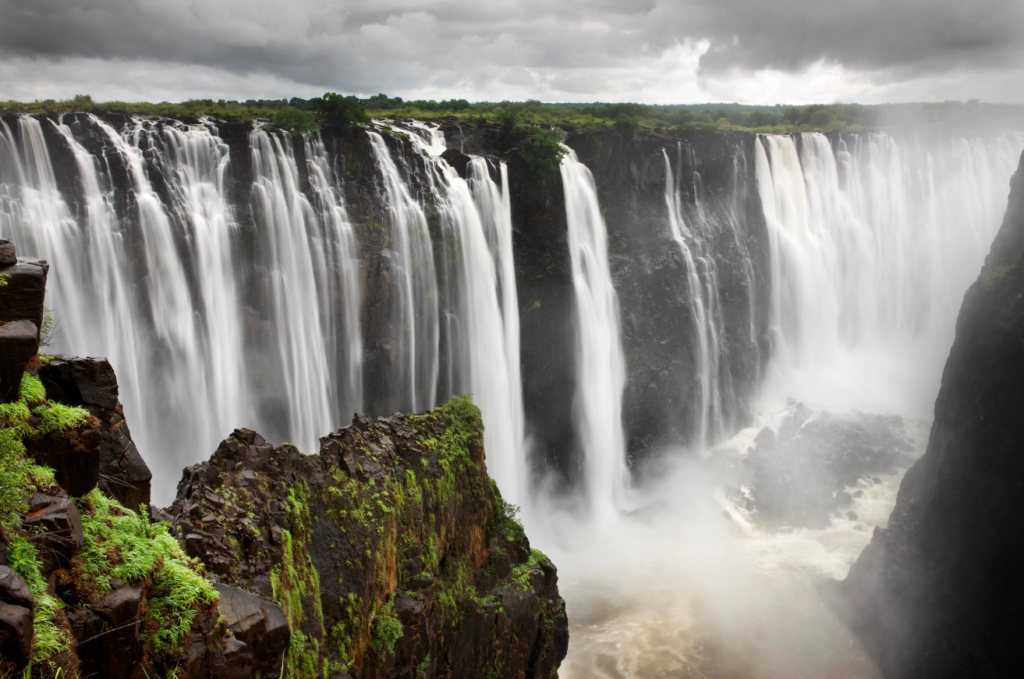
Straddling the border between Zambia and Zimbabwe, Victoria Falls constitutes one of the natural wonders of the world, a striking spectacle of unparalleled beauty and power that dwarfs the human observer.
Known as ‘Mosi-oa-Tunya’ or ‘The Smoke That Thunders’ by locals, the falls represent a magnificent display of nature’s raw force and grandeur.
The magnitude of Victoria Falls is breathtaking. It is twice the height of Niagara Falls and significantly wider. The cascade plunges over a cliff into the Zambezi River, creating a mist that can be seen from miles away. The sheer scale and power of the falls are enough to make anyone feel insignificant in comparison.
Visitors to Victoria Falls are not only dwarfed by its physical dimensions but also by the rich array of local wildlife that inhabits the area. Close encounters with elephants, hippos, and crocodiles are common, while the skies above are adorned with a diverse range of bird species.
These encounters underscore our place in the larger ecosystem, reminding us of our relative insignificance in the grand scheme of life on Earth.
The experience of standing at the edge of Victoria Falls is both humbling and awe-inspiring. It’s a place that truly puts into perspective the relative smallness of human beings against the backdrop of nature’s grandeur.
As such, Victoria Falls stands as an unparalleled testament to the power and beauty of the natural world, a place where one can’t help but feel small.
Redwood Forest’s Giant Trees, California
Majestically dominating the landscape, the ancient Redwoods in California tower above all else, their immense heights and broad trunks encapsulating the overwhelming grandeur of nature.
These colossal trees, some reaching over 350 feet tall, are not just a symbol of the state’s natural beauty, but also a testament to the enduring strength of the Redwood Ecosystems.
The Redwood Forests, home to the world’s tallest trees, are a marvel of ecological balance and resilience.
These ecosystems, while appearing serene, are the scenes of constant change and adaptation. Plants, animals, and fungi all interact in complex ways, contributing to the health and longevity of these giant trees. The towering Redwoods provide shelter, food, and a stable habitat for numerous species, some of which are found nowhere else on Earth.
But it’s not just the sheer size of these trees that makes them remarkable; it’s their ancient tree history.
Some Redwoods are estimated to be over 2,000 years old, bearing the silent witness to centuries of human history and environmental changes. As you stand dwarfed beneath their towering canopies, you can’t help but feel humble and awestruck by the longevity and perseverance of these arboreal giants.
Visiting the Redwood Forests in California can be a profoundly humbling experience.
Standing beneath these towering pillars of nature, one can’t help but feel smaller, yet strangely connected to a larger, grander scheme of life. The Redwoods remind us of our place in the world, underscoring the importance of preserving these precious ecosystems for future generations to admire and learn from.
Gazing Up at Northern Lights, Alaska
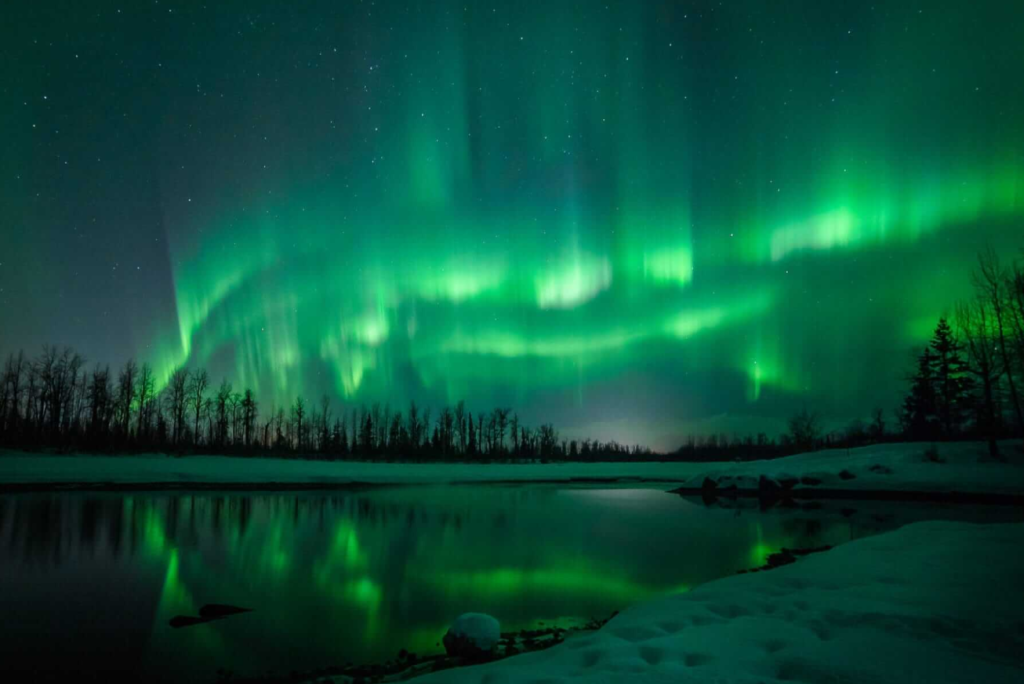
Shifting our gaze northward, we find ourselves in the vast expanses of Alaska, where the ethereal beauty of the Northern Lights paints the sky with vibrant hues, offering a celestial spectacle that is both humbling and awe-inspiring.
Known as the Aurora Borealis, this natural phenomenon has given rise to numerous myths and legends, each more captivating than the last.
Historically, the indigenous peoples of Alaska viewed the Aurora Borealis as the spirits of departed ancestors dancing in the sky.
Others saw them as omens, with different colors signifying various future events. While science has since offered an explanation – the lights are caused by solar particles colliding with Earth’s magnetic field – the myths persist, adding a layer of mystique to an already enchanting event.
As you stand under the expansive Alaskan sky, shrouded in the shimmering curtains of the Northern Lights, you may also find yourself in the company of Alaskan wildlife.
The state is renowned for its rich biodiversity, boasting species like the grizzly bear, Alaskan moose, and the bald eagle. Their presence, combined with the ethereal light show overhead, creates a surreal tableau, reminding us of our place in the grand scheme of things.
Gazing up at the Northern Lights, one cannot help but feel a sense of insignificance. It’s a humbling experience that underscores the vastness of nature and the universe.
Yet, it is precisely this feeling of smallness that makes such experiences profoundly beautiful, and utterly unforgettable.
Wrap Up
These ten global destinations highlight the vastness and grandeur of nature, dwarfing human presence and perspective. They serve as a reminder of the extraordinary power and beauty that our planet possesses.
Each site, from the towering heights of Mount Everest to the underwater wonders of the Great Barrier Reef, offers a unique, humbling experience that underlines our modest place in the world.
As such, these locations offer not just an exploration of nature, but an exploration of self in relation to the expansive world.

